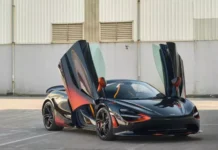Research conducted by the Car Care Council shows that 50% of drivers are concerned when their brake system is faulty. Furthermore, a car traveling approximately 16,000-25,000 km per year will require the driver to use the brakes about 75,000 times.
These statistics highlight the importance of having a properly functioning brake system for driver safety. Surprisingly, about half of the cars and trucks in the US that are over 10 years old have never had their brake fluid changed. In contrast, European countries have regulations in place for regular brake fluid checks, which have revealed that approximately 50% of vehicles have brake system faults.
Brake system effectiveness can be compromised by water-contaminated brake fluid.
Unfortunately, there are no official statistics in Vietnam regarding brake system maintenance and regular brake fluid changes. However, the overall safety awareness in Vietnam is not as high as in the US and Europe, which suggests that the situation may be worse in Vietnam.
Brake fluid is also a critical component for safe driving, and vehicle owners should follow the manufacturer’s recommendations on changing brake fluid. Brake fluid contains glycol, which is a strong water absorbent. When the brake system overheats, the fluid boils, creating air bubbles that can displace the liquid brake. This results in an ineffective brake system. Additionally, water-contaminated brake fluid can accelerate the corrosion of brake system components. Over time, the water vapor can penetrate rubber hoses and seals, especially in vehicles used in high humidity environments.
Brake fluid should be changed every 1-2 years.
Even if water-contaminated brake fluid meets safety regulations, there is still a risk of danger after prolonged use. Experts recommend checking and changing brake fluid every 1-2 years. It is known that brake fluid can become contaminated with 2% water after 1 year of driving, and 3% after 18 months. For older vehicles, it’s not uncommon to find brake fluid samples containing 7-8% water.
The US National Traffic Safety Commission reports that 20% of the 1,720 vehicles studied had brake fluid contaminated with more than 5% water. When brake fluid is mixed with water, its boiling point decreases. Most new DOT fluids have a boiling point of approximately 240-260 degrees Celsius. However, DOT 3 fluid, for example, boils at 205 degrees Celsius. When mixed with 1% water, the boiling point drops to 187 degrees Celsius. The boiling point continues to decrease to 160 and 145 degrees Celsius when the brake fluid is contaminated with 2% and 3% water, respectively. DOT 4 fluid, while slower to absorb moisture, experiences a greater decrease in boiling point compared to DOT 3. When contaminated with 3% water, the boiling point of DOT 4 is reduced by half compared to DOT 3.















































